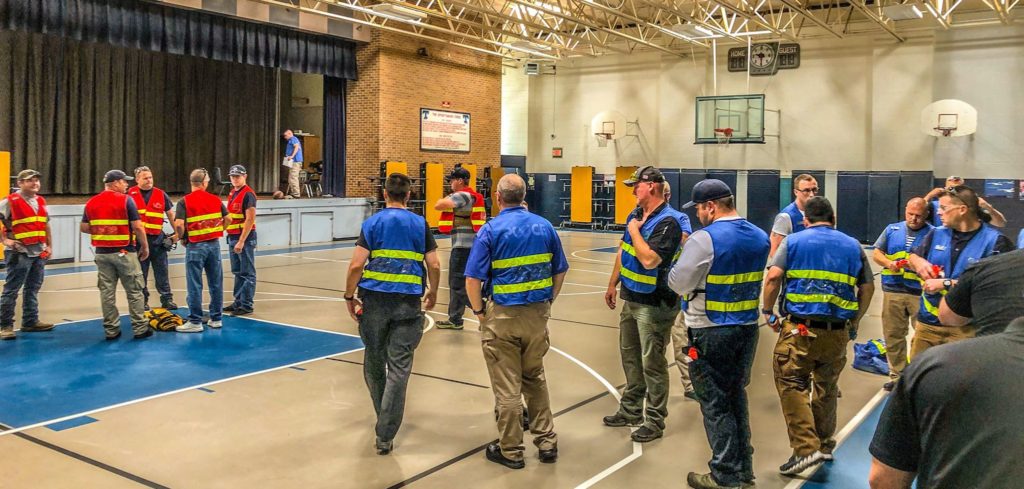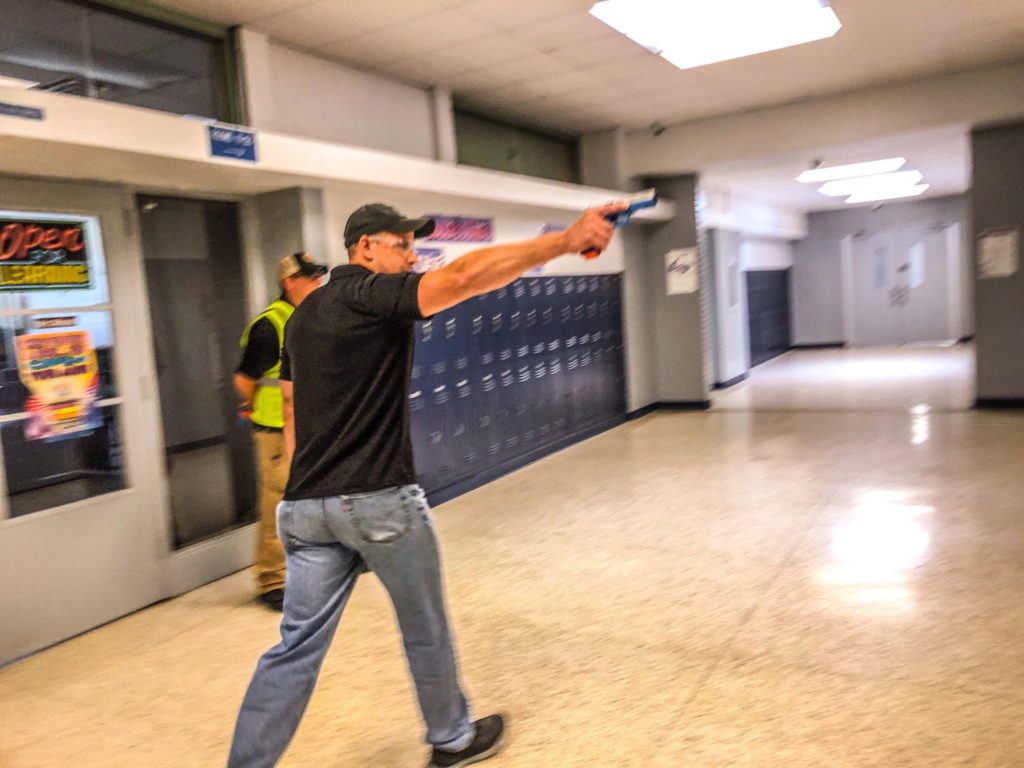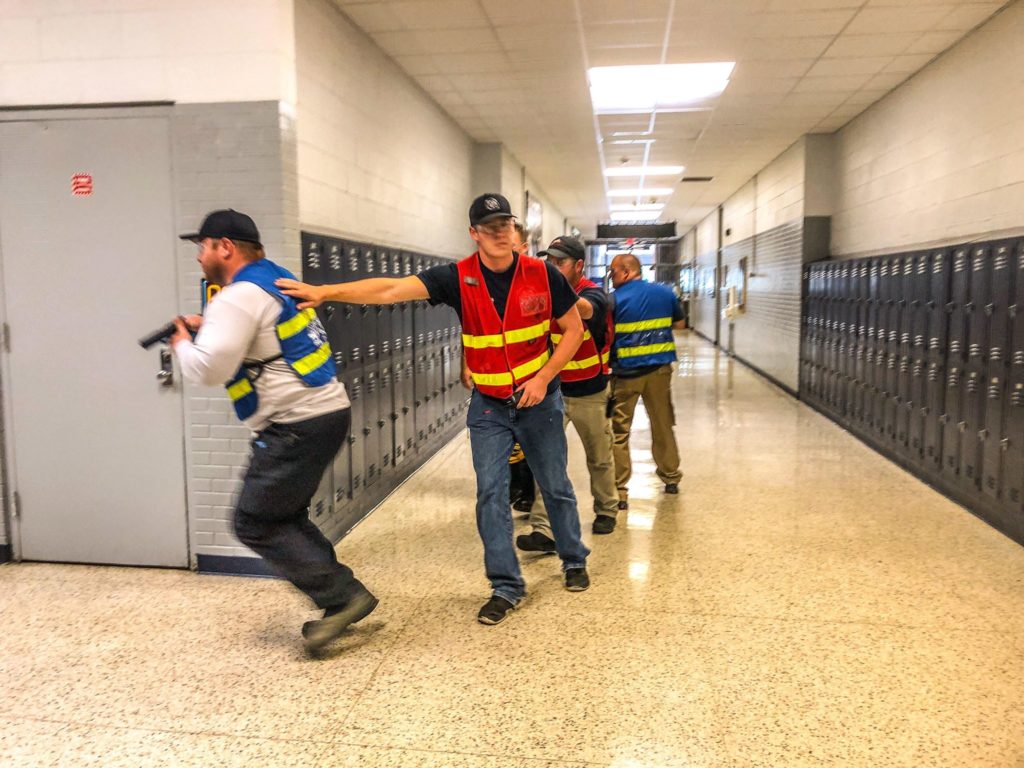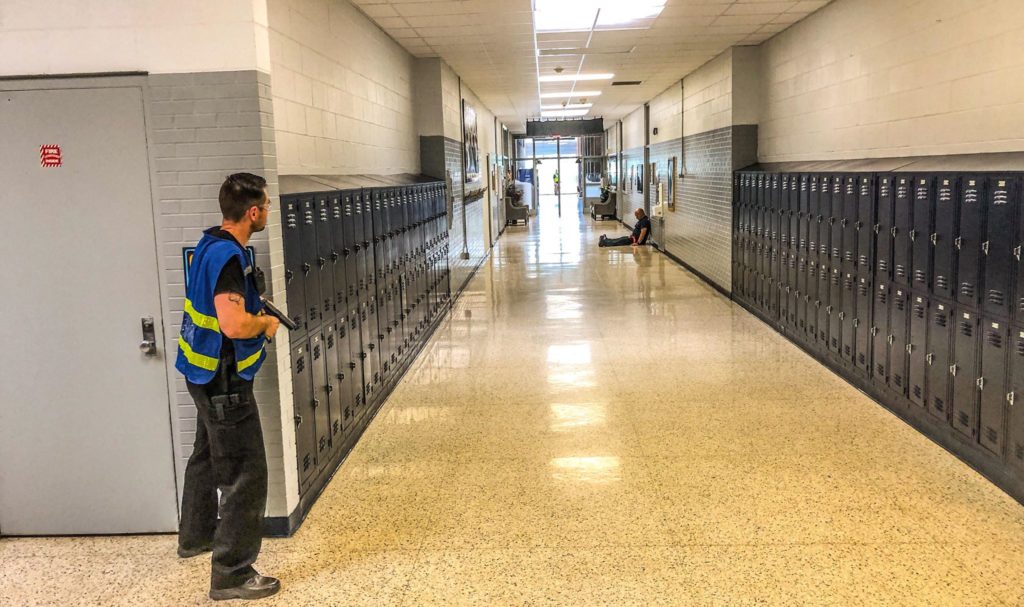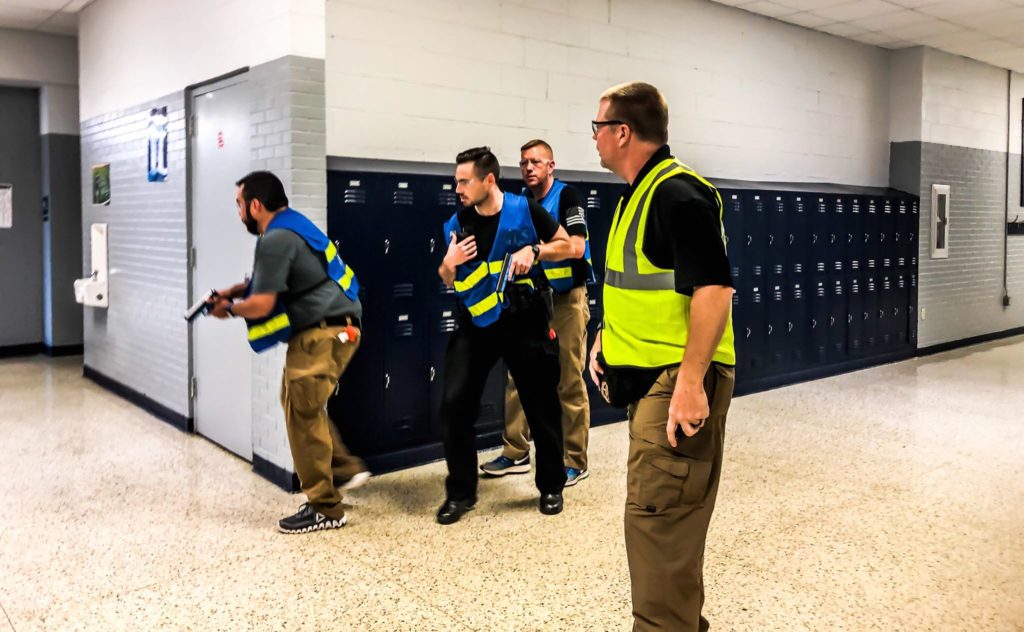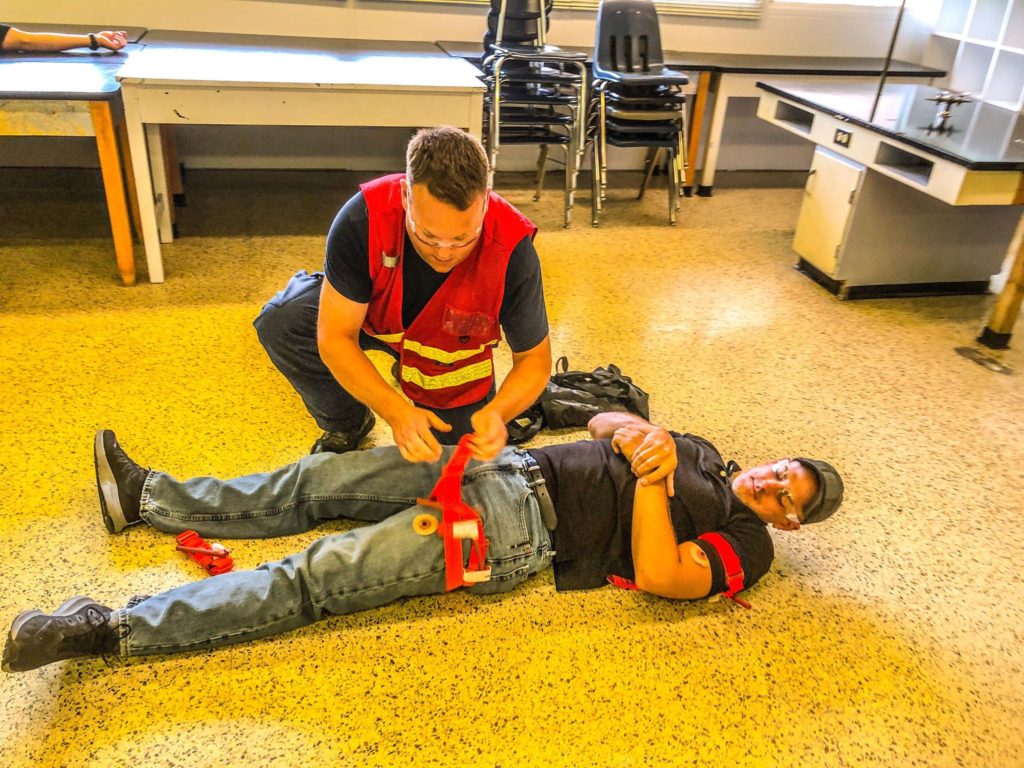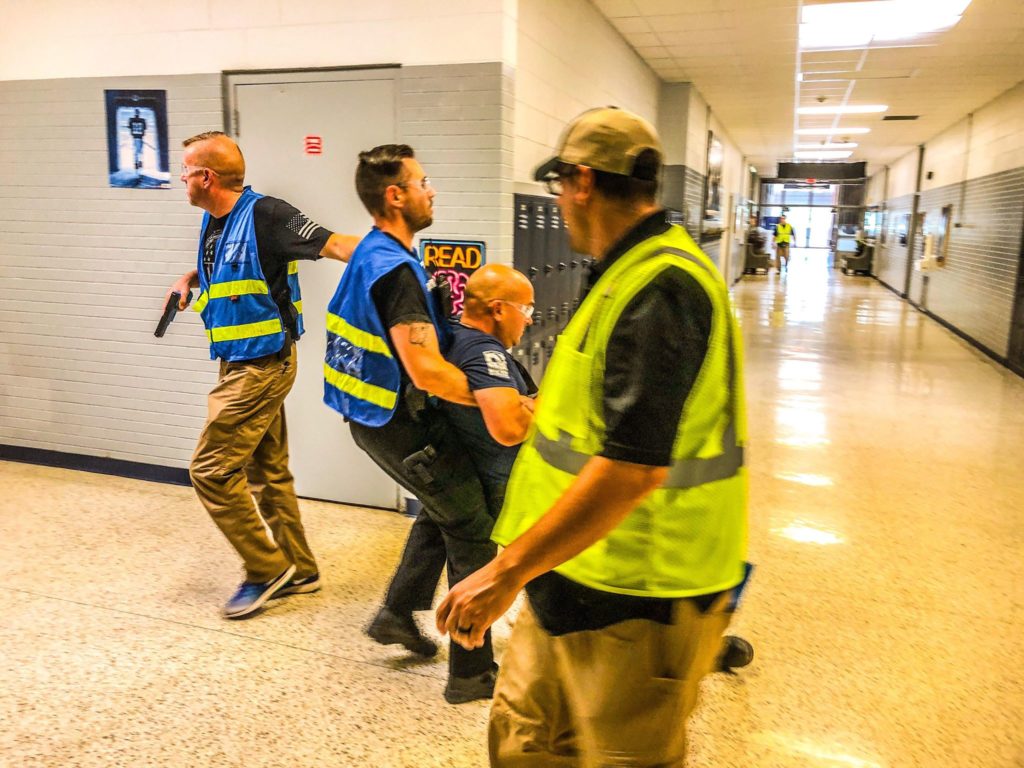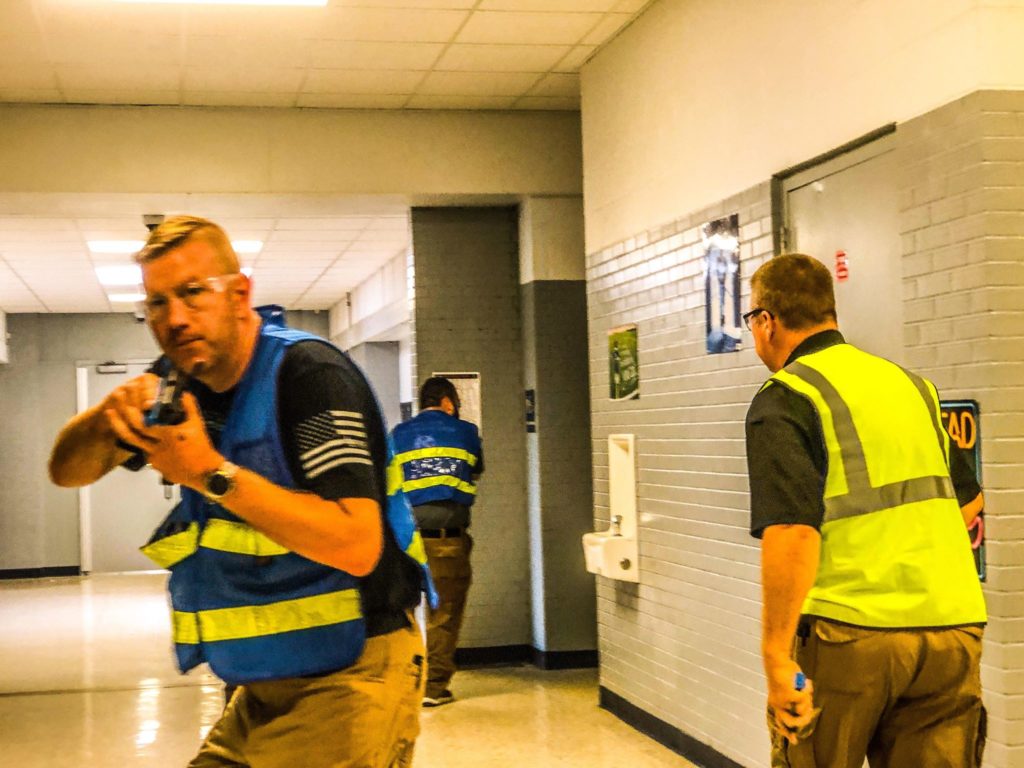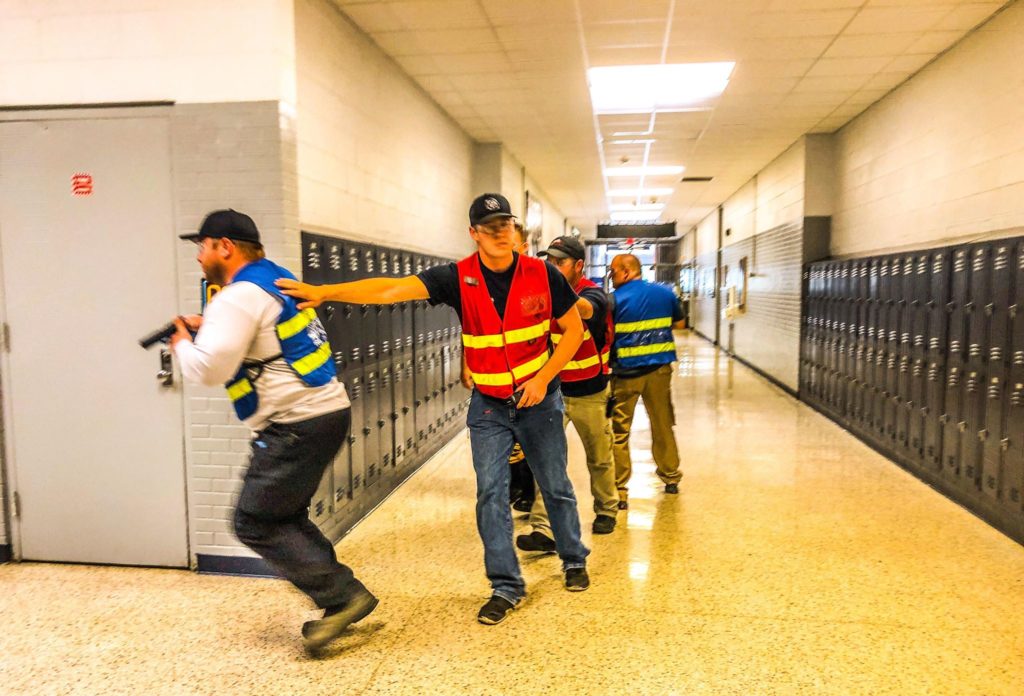Active shooter training and response has become the norm for first responders across the nation as recent years have shown the threat is a lot more realistic than history had us once believe.
This past week Paris played host to several first responder departments from around the state and country for active shooter training.
“We bring together multiple departments to establish a better intervention to ensure better ways to save lives in incidents that have the probability of occurring,” said Joe LoBrutto instructor with ALERRT.
“Training together in these simulated exercises is so important for our local departments,” said Lamar County Emergency Manager Quincy Blount.
LoBrutto further added that first responders should work together and understand each others role in these types of situational awareness rundowns only benefits the overall outcome.
This weeks course was the Active Attack Integrated Response Course (AAIR) Train-the-Trainer, which runs over 5-days/40 hrs, and includes the ‘train the trainer’ aspect which helps this course continue its training capabilities.
The nationally accredited course runs through six-scenarios for the first part of the curriculum in their simulated training.
“We set up around six different scenarios for our students to work through,” LoBrutto explained, “all the scenarios have been put together based on data from actual incidents that have occurred.”
Data and research is the crux to how the courses are set up, knowing that there are a handful of elements that have shown to be the same across the board.
Though LoBrutto did say every scenario is different, when it came to training the overall outcome is to have first responders ready for any scenario that they could encounter.
“We need to have the basic knowledge and understanding of each others roles. Training enables us to an abundance of understanding of how we all work together and how we can continue building strengths across the board as a larger team and not just in our respective fields. This is why this training is great to host and great for all of our departments to do together,” said Blount.
Understanding hot zones, and how to move into a situation is vital for all those who would respond to thoroughly recognize what roles other departments’ would have played out.
For example, one run-through scenario showcased a single active shooter; there were actors in the hallways playing the roles of victims. Interestingly seen was how the first line of ‘help’ evaluated the situation and victims as they moved through the hot zone.
Instructors were placed with different groups, explaining that there is a reason for every move a first responder makes. Those responses are most likely determined by the training they receive from their respective department and how they can implement those alongside other departments for the best overall outcome.
For police officers, they appeared to have the ability to carry multiple roles depending on their response time to the situation [also based on the simulation times to work within which came from local data the trainers received].
When it came to firefighters engaging in the simulated setting, police officers adjusted to a specific role that then showcased how all departments need to work together from start to finish productively.
Instructors also explained that when it comes to response, part of the foundation of the training program came from a military response training based on real-life triage response.
Understanding deciding factors and variables to that of real-life situations, coupled with the perspective of knowing that in a civilian setting there are no standard averages makes this style of training even more important, not only to workaround possible complications but to effectively coordinate each department to their full capabilities.
“This course we are putting on is a nationally accredited course,” LoBrutto said, “so a solo officer that has completed the course will have the knowledge to know how to neutralize a situation, engage safely and read a situation to take the best proactive approach to stop the killing or render the correct aid.”
By the end of the week, local police, paramedics, firefighters, and dispatch operators will understand the correct action and steps to coordinate the best possible outcome should an operational hazardous situation occur.
“The key to retaining this training is ensuring that all departments get together as regularly as they can to run through aspects that have been learned and talk about situational awareness aspects so we can continue to go from strength to strength,” Blount explained.
“Many of our classes are funded through such funding sources as the Bureau of Justice Assistance, VALOR, the Office of the Governor, or the Department of Homeland Security,” explained the ALERRT website.
“By the end of the course, should an active shooter incident come to reality, your local first responders will have the knowledge and know-how to control the situation to their best advantage and hopefully save lives no matter where the call for help comes from,” explained LoBrutto.
Represented in the Advanced Law Enforcement Rapid Response Training (ALERRT) was:
- Paris Police Department
- Lamar County Sheriff’s Office
- North Lamar ISD Police Department
- USAF Dyess AFB Security Forces
- South Carolina DPS
- Red River Army Depot
- North Myrtle Beach Police Department
- Richland County Sheriff’s (South Carolina) Centeron
- Arkansas Police Department
- Reno (TX) Police Department
- Paris Fire Department
- Paris EMS
- Marshall Police Department
- Marshall Fire Department
- McKinney Fire Department
- Siloam Springs (Arkansas) Fire Department
- Paris Police Department Dispatch
- Lamar County Sheriff’s Office Dispatch and,
- Coppell Fire Department.


